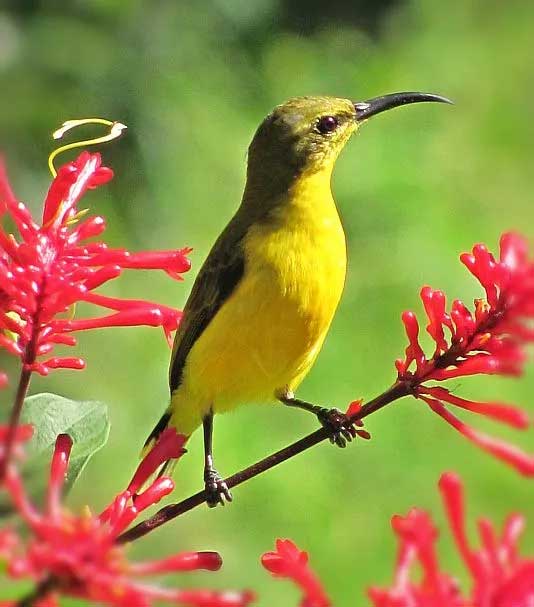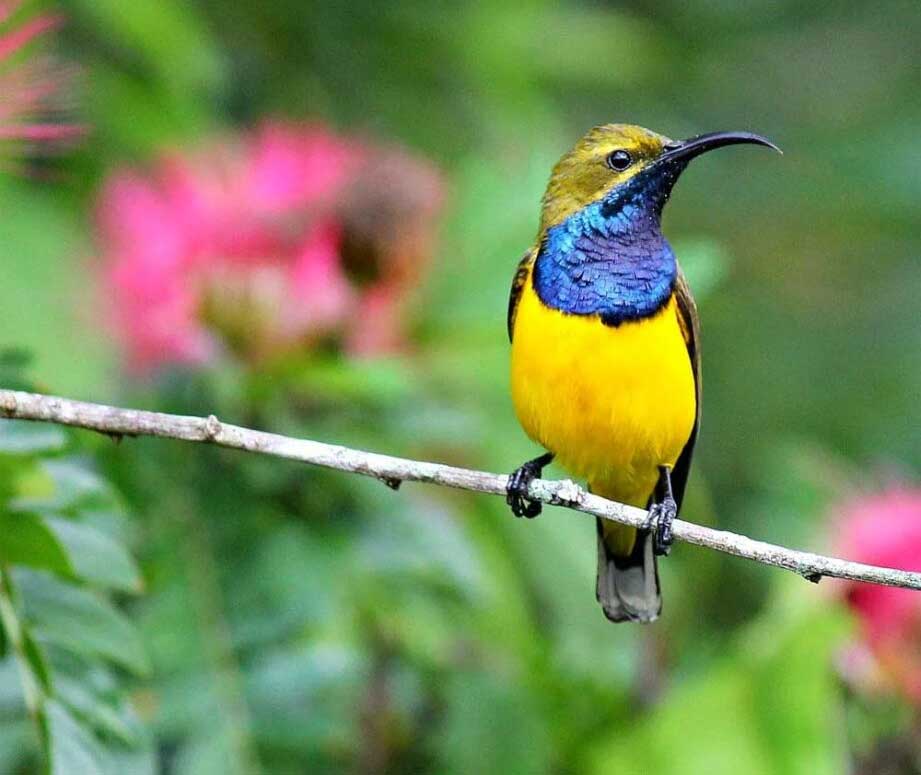Olive-backed Sunbird
An iconic bird of the Daintree Rainforest is the Olive-backed Sunbird (Nectarina jugularis). These lovely creatures are found in coastal regions of Tropical North Queensland. Wherever there is a plentiful supply of flowering plants you’ll find these beautiful little birds darting about feeding on nectar. Frequently we see them on our tour.
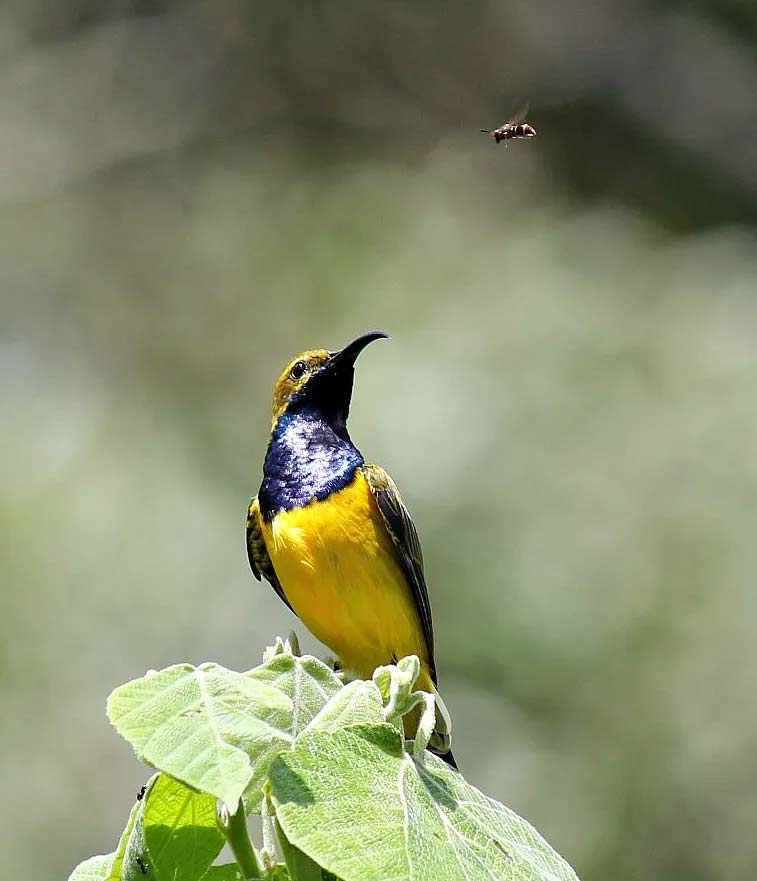
Adult Olive-backed Sunbirds are primarily nectivorous. However, they do eat an insect or two especially around breeding season when a little extra protein is helpful. The young are fed insects by their parents while fledging.
Olive-backed Sunbirds nesting
These tiny birds have a delightful habit of building their nests in and around our homes. The Olive-backed Sunbird understands that their predators usually avoid places frequented by humans.
Often, we find their swaying pods on our verandas, sheds, from clothes lines, even in our houses. Large birds like Kookaburras and Butcher-birds prey on the young. Naturally, snakes are also fond of the baby birds so taking shelter near humans affords the family some protection.
The Nest
Mostly, the nest is an intricate sphere usually suspended from a branch or vine. Locals often string pieces of rope around their homes for the Sunbirds. Watching the nesting process up close is a fascinating experience and one we love to encourage.
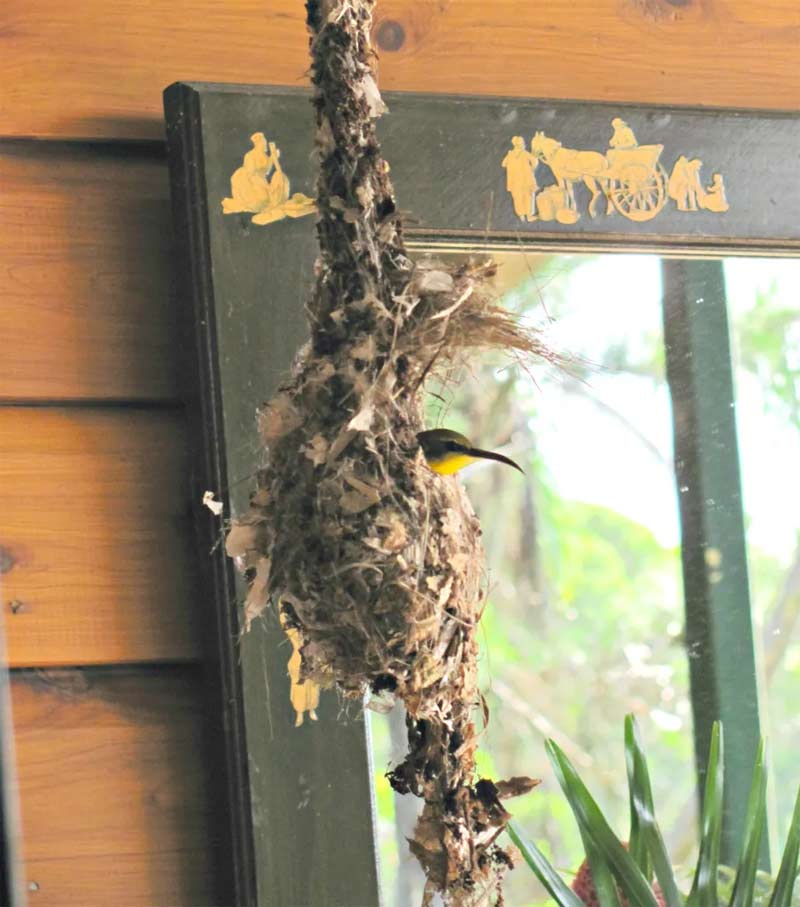
The female is the nest builder. Over the course of a few weeks she will spend almost every hour of the day collecting materials and meticulously constructing it. She delicately weaves grasses, lichen, plant matter and spider webs to make a sturdy little ball. Her design even includes a small veranda over the opening to shield her young from the elements. The interior of the nest is a fluffy lining of soft plant matter, feathers, even animal hair.
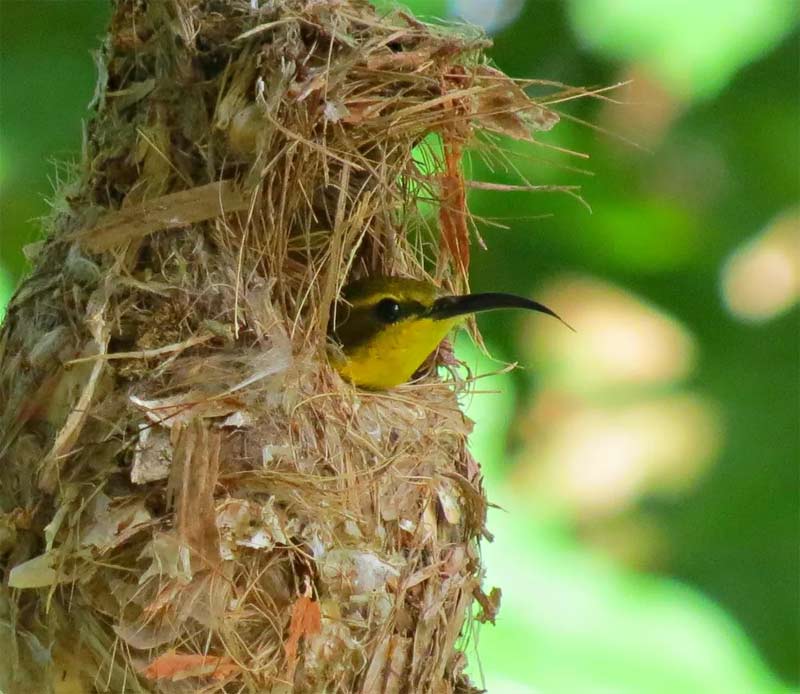
During the building process the male is not idle. He diligently guards his mate every step of the way as she pays close attention to her labours.
Family Working Hard
A sure way to know that Sunbirds are at work is his persistent cheeping and squealing as he warns her of any dangers. If there are mirrors or windows nearby you will find him facing his reflection sternly warning that “other” male to stay away from his family.
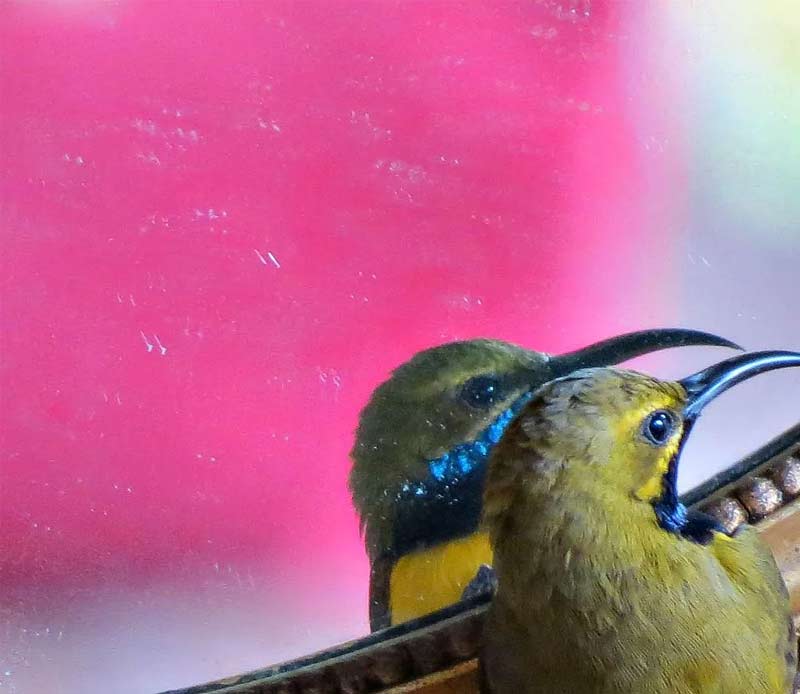
Sunbirds usually lay a couple of small, pale eggs and both parents diligently tend the nest once the chicks are hatched. The work is constant as they feed and clean up after their little ones.
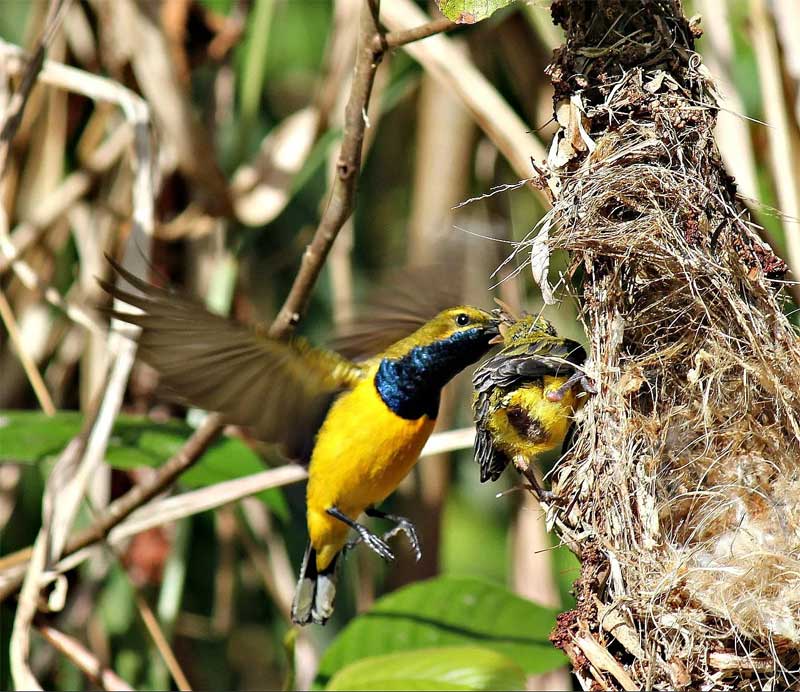
The male and female Olive-backed Sunbird are sexually dimorphic. It’s easy to spot the male with his iridescent blue bib and yellow belly. The female Olive-backed Sunbird has an olive back and is completely golden underneath. They both have a slender curved beak and a long thread-like tongue.
